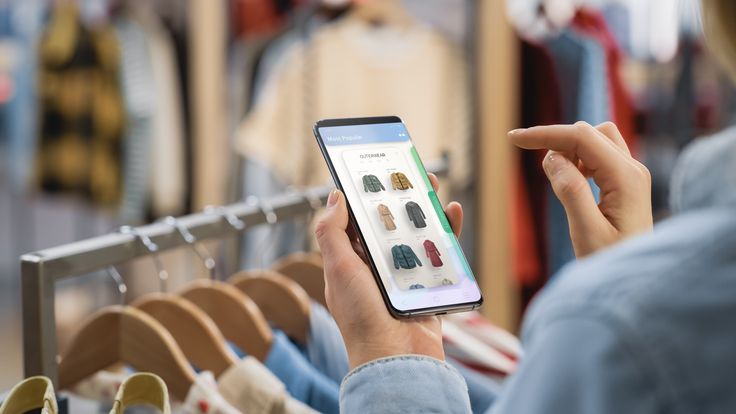Introduction
The global wholesale clothing market is a vibrant and dynamic industry that provides
significant opportunities for businesses and retailers.With a focus on markets such as
the United States, United Kingdom, Canada, Australia, the Gulf region, and Saudi Arabia,
understanding how to Effectively navigate the complexities of purchasing wholesale clothing
can set the foundation for a profitable enterprise. This guide offers a detailed exploration
of key considerations and strategic approaches essential for successfully buying and
selling wholesale clothing on an international scale.
Wholesale clothing refers to the practice of buying clothing
items in large quantities directly from manufacturers,
distributors, or wholesalers at a lower price per unit.
This bulk purchasing enables retailers to sell the products
at a higher markup to the end consumers,
achieving considerable profit margins. Unlike retail purchases,
where items are bought individually at a higher cost,
wholesale transactions often involve substantial
discounts due to the large volumes ordered.
Types of Wholesale Clothing Suppliers
Wholesale clothing suppliers can be categorized into several types,
each offering different benefits:
- Manufacturers : Direct purchase from clothing manufacturers
often results in the lowest cost per item,
as there are no intermediaries.
This option is ideal for businesses looking to create custom designs
or maintain strict quality control.
- Distributors : These intermediates purchase large quantities
from manufacturers and sell them to retailers.
Distributors often provide a diverse range of products
from multiple manufacturers,
making it easier for retailers to source various styles and categories.
- Wholesalers : Similar to distributors, wholesalers buy bulk
quantities from manufacturers or
other distributors and sell them to retailers.
They often operate in specific niches, offering specialized product lines.
- Importers : These suppliers focus on importing clothing from other countries,
providing access to international fashion trends and unique
products that may not be locally available.
Market Research and Trend Analysis
Conducting comprehensive market research is the first
and most crucial step in wholesale purchasing.
This process involves understanding the demographics
and preferences of your target audience,
as well as the prevailing fashion trends in your market.
For instance, the demand for summer clothing
in Australia or the Gulf region differs significantly
from the demand for winter clothing in Canada.
Utilizing market research tools and resources,
such as fashion magazines, trend forecasting reports,
and social media analysis,
can help you stay updated with the latest consumer preferences.
Identifying Target Market Segments
Segmenting your market involves categorizing potential
customers based on various criteria such as age,
gender, income level, lifestyle, and geographic location.
By specific identifying segments,
you can tailor your product offerings to meet the unique
needs of different customer groups.
For example, younger demographics may prefer trendy
and affordable fashion,
while an older audience might prioritize quality and classic styles.
Budget Planning and Cost Analysis
Effective budget planning encompasses not only the cost of
purchasing wholesale clothing
but also additional expenses such as shipping,
customs duties, taxes, and import fees.
It is essential to calculate the total landed cost—
the complete cost of getting the product to your final destination—
including all these expenses.
This comprehensive cost analysis ensures that
you can set retail prices that cover all costs
and achieve a reasonable profit margin.
Additionally, consider the payment terms offered by suppliers;
Favorable terms such as extended payment periods
can improve your cash flow management.
Legal and Regulatory Considerations
Understanding the legal and regulatory framework in your target markets is vital.
This includes compliance with local laws regarding labeling, safety standards,
and intellectual property rights. For instance, some countries have strict regulations on
labeling requirements, including the disclosure of fabric content and country of origin.
Failing to comply with these regulations can result in fines, product recalls,
or damage to your brand reputation. Additionally, be aware of any import restrictions or
tariffs that may apply to specific types of clothing.
3. Sourcing Wholesale Clothing Internationally

Finding trustworthy suppliers is critical to the success of
your wholesale business. Reliability in terms of quality,
delivery time, and communication can significantly
impact your business operations.
To ensure you are working with reputable suppliers,
consider the following steps:
- Background Checks : Conduct thorough background
checks on potential suppliers,
including their business history, customer reviews,
and any certifications they hold.
- Factory Audits : If feasible, conduct factory audits to
assess the manufacturing processes,
working conditions, and quality control measures.
This is especially important
when sourcing from international suppliers where standards may vary.
- Supplier Networks and Referrals : Utilize industry networks and
referrals to find reputable suppliers.
Attending industry events, trade shows,
and networking with other retailers
can provide valuable insights and recommendations.
Evaluating Quality and Standards
Quality assurance is a crucial aspect of wholesale purchasing,
as the quality of the products you sell directly affects
your brand's reputation and customer satisfaction.
When evaluating potential suppliers, consider the following:
- Sample Requests : Always request product samples
before placing a bulk order.
This allows you to assess the material quality,
stitching, fit, and overall craftsmanship.
Pay attention to details such as fabric weight,
colorfastness, and durability.
- Compliance with Standards : Ensure that the products meet
all relevant safety and quality standards in your target markets.
This includes compliance with regulations regarding chemicals,
flammability, and other safety concerns.
- Return and Replacement Policies : Discuss return and replacement
policies with suppliers in case the products do not meet the agreed-upon
quality standards. A clear understanding of these policies protects you
from potential losses.
Negotiating Terms and Conditions
Negotiating favorable terms with suppliers can provide significant
cost savings and operational benefits. Key areas to negotiate include:
- Pricing : Negotiate for the best possible pricing based on the order volume.
Larger orders typically qualify for higher discounts.
- Payment Terms : Seek flexible payment terms, such as extended payment
periods or installment plans. This can help manage cash flow, especially for
new businesses with limited capital.
- Delivery and Lead Times : Clearly define delivery schedules and
lead times to ensure timely stock replenishment. Delays in delivery
can disrupt your business operations and lead to lost sales.
- Return and Exchange Policies : Agree on terms for returns and
exchanges in case of defective or unsatisfactory products.
This is crucial for protecting your investment and maintaining customer satisfaction.
4. Online Wholesale Marketplaces

Online wholesale marketplaces offer a convenient and efficient way
to source clothing from suppliers worldwide.
These platforms provide access to a wide range of products and suppliers,
making it easier to compare options and find the best deals.
Some of the most popular online wholesale marketplaces include:
- Alibaba : One of the largest global wholesale platforms,
Alibaba connects buyers with suppliers from various countries,
particularly China. The platform offers a vast array of products,
including clothing, accessories, and textiles. Alibaba also provides
trade assurance services to protect buyers' payments and
ensure the quality of the products.
- FashionGo : A leading online wholesale marketplace specializing in fashion,
FashionGo connects retailers with suppliers from the United States and beyond.
The platform offers a wide selection of apparel, footwear, and accessories,
with a focus on trendy and contemporary styles.
- Global Sources : This platform caters to international buyers
looking for a diverse range of products, including clothing.
Global Sources offers verified suppliers and product listings,
providing buyers with a level of assurance regarding the quality and reliability of the products.
While online marketplaces offer numerous benefits,
such as convenience and access to a global supplier base, it is essential to exercise caution.
Verify the credibility of suppliers, read customer reviews, and use secure payment methods
to protect your transactions.Additionally, consider starting with smaller orders to test the
quality and reliability of the suppliers before committing to larger purchases.
5. Wholesale Markets and Trade Shows

Wholesale markets and trade shows provide valuable opportunities to connect with suppliers,
discover new products, and stay updated with industry trends.
These events offer a unique chance to see products firsthand,
negotiate directly with suppliers, and build relationships
with industry professionals. Some of the most notable
wholesale markets and trade shows include:
- MAGIC Las Vegas : One of the largest fashion trade shows in the world,
MAGIC Las Vegas features a diverse range of apparel, footwear,
and accessories from global exhibitors. The event attracts retailers, buyers,
and fashion professionals from around the world, offering a comprehensive
view of the latest trends and innovations in the fashion industry.
- Pure London : Held biannually, Pure London is the UK's leading fashion trade show,
showcasing a wide array of contemporary and designer brands.
The event offers a platform for international suppliers to connect with buyers
from the UK and beyond, providing insights into the latest fashion trends and market demands.
- China International Fashion Fair (CHIC) : As Asia's largest fashion trade show,
CHIC offers a comprehensive platform for international buyers to explore a wide
range of clothing and accessories. The event features a diverse selection of
products from Chinese and international exhibitors, making it an ideal venue
for sourcing high-quality fashion items.
Attending these events can provide valuable insights into the fashion
industry and help you stay ahead of market trends. Additionally,
building relationships with suppliers and industry professionals at
these events can lead to long-term partnerships and opportunities for business growth.
6. Logistics and Distribution

Shipping and Customs
Navigating the complexities of international shipping and customs
is a critical aspect of wholesale purchasing. Understanding the various
shipping methods and their associated costs is essential for optimizing
your supply chain and managing costs. Key considerations include:
- Shipping Methods : The choice of shipping method—air, sea,
or express—depends on factors such as cost, delivery time,
and the nature of the products. Air freight is faster but more expensive,
making it suitable for high-value or time-sensitive products.
Sea freight is more cost-effective for bulk shipments but requires longer transit times.
Express shipping offers a balance
between speed and cost for smaller, urgent orders.
- Customs Regulations: Familiarize yourself with the customs regulations
and import duties in your target markets. This includes understanding
the documentation requirements, such as invoices, packing lists,
and certificates of origin. Accurate and complete documentation
ensures smooth customs clearance and prevents delays or additional charges.
- Freight Forwarders and Customs Brokers : Working with experienced freight
forwarders and customs brokers can streamline the shipping and customs clearance process.
These professionals can handle the logistics, documentation, and compliance requirements,
allowing you to focus on other aspects of your business.
Inventory Management
Effective inventory management is crucial for maintaining a smooth
and profitable operation. Key strategies include:
- Inventory Tracking Systems : Implement inventory tracking systems
to monitor stock levels in real-time. This helps prevent stockouts and
overstock situations, ensuring that you have the right products
available when customers need them.
- Demand Forecasting : Use demand forecasting tools to predict
future sales trends and adjust your inventory levels accordingly.
Accurate forecasting helps optimize stock levels,
reduce carrying costs, and improve cash flow.
- Warehouse Management : Efficient warehouse management is
essential for organizing and storing products. Implement best practices
such as proper labeling, categorization, and organization to streamline
order fulfillment and reduce errors.
- Returns Management : Establish a clear returns management
process to handle defective or unsatisfactory products.
This includes setting policies for returns, exchanges, and refunds,
as well as tracking and analyzing return rates to identify and address quality issues.
7. Marketing and Selling Wholesale Clothing

Building a Brand
Building a strong brand is essential for differentiating your business
in the competitive wholesale clothing market. A well-defined brand
identity helps establish trust and credibility with customers,
driving loyalty and repeat business. Key elements of brand building include:
- Brand Positioning : Define your brand's unique value proposition
and target market. Identify what sets your brand apart from competitors
and communicate this clearly to your customers.
- Visual Identity : Develop a cohesive visual identity, including a logo,
color scheme, typography, and packaging design. Consistency in
visual elements helps create a recognizable and memorable brand.
- Brand Story : Craft a compelling brand story that resonates with
your target audience. This could include your brand's mission, values,
and the inspiration behind your products. A strong brand story helps
build an emotional connection with customers.
- Quality and Consistency : Maintain high standards of quality
and consistency across all products and customer touchpoints.
Delivering on your brand promise builds trust and reinforces your brand's reputation.
Online and Offline Sales Strategies
Implementing a combination of online and offline sales strategies allows
you to reach a broader audience and maximize sales opportunities. Key strategies include:
- E-commerce Platforms : Establish an online presence through e-commerce
platforms such as Shopify, WooCommerce, or Magento. An online store provides
a convenient and accessible way for customers to browse and purchase your products.
Optimize your website for user experience, including mobile compatibility,
easy navigation, and secure payment options.
- Digital Marketing : Utilize digital marketing techniques such as search
engine optimization (SEO), social media marketing, and email marketing
to drive traffic to your online store. SEO helps improve your website's visibility
in search engine results, attracting organic traffic. Social media marketing
allows you to engage with customers, share content, and promote products.
Email marketing is effective for building customer relationships and driving
repeat sales through personalized offers and promotions.
- Physical Retail and Showrooms : Consider establishing a physical
retail store or showroom to provide customers with a tangible shopping
experience. A physical presence allows customers to see, touch,
and try on products before purchasing. Additionally, showrooms
can serve as a hub for wholesale buyers to view product samples and place orders.
- Wholesale Channels : For businesses focusing on wholesale distribution,
establish relationships with retailers, boutiques, and department stores.
Offer competitive pricing, flexible order options, and reliable delivery to
attract and retain wholesale customers. Additionally, participate in trade
shows and industry events to showcase your products and network with potential buyers.
- Promotions and Incentives : Offer promotions, discounts, and loyalty
programs to incentivize purchases and encourage repeat business.
Limited-time offers, seasonal sales, and bulk discounts can drive sales
and attract new customers. Loyalty programs reward repeat customers
with exclusive discounts, early access to new products, or special offers,
fostering customer loyalty and retention.
Conclusion
Successfully navigating the wholesale clothing market requires a strategic approach,
comprehensive planning, and a deep understanding of market dynamics.
By conducting thorough market research, selecting reliable suppliers,
implementing effective logistics and inventory management strategies,
and building a strong brand, businesses can thrive in this competitive industry.
The potential for growth and profitability in the wholesale clothing market is substantial,
with opportunities to expand into international markets and cater to diverse customer needs.
As you embark on your journey in the wholesale clothing industry, remain adaptable
and continuously seek ways to innovate and improve your business operations.
Stay informed about market trends, invest in building strong relationships with suppliers and customers,
and prioritize quality and customer satisfaction. With dedication, strategic planning,
and the right strategies, the wholesale clothing market can offer rewarding prospects for growth and long-term success.